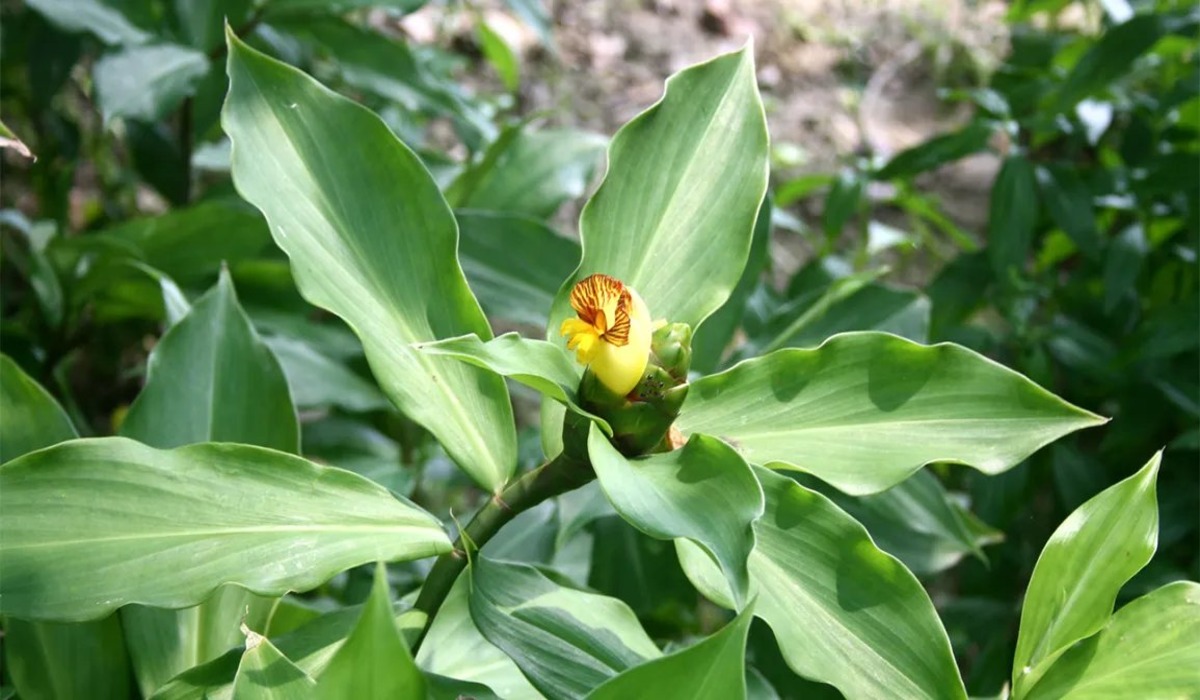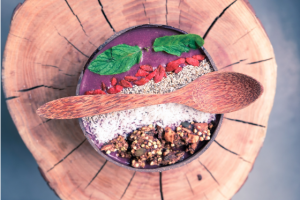What is an Insulin Plant?
The insulin plant, scientifically known as Costus igneus, is a medicinal plant native to Southeast Asia. This unique plant has gained popularity due to its potential health benefits, specifically its ability to regulate blood sugar levels. The leaves of the insulin plant contain bioactive compounds that mimic the action of insulin in the body, hence its name.
The insulin plant is a perennial herb that grows up to 2-3 feet tall. It has large, glossy, oval-shaped leaves that are strikingly similar to the leaves of a ginger plant. The plant also produces vibrant orange or yellow flowers, adding to its visual appeal. It thrives in warm and humid climates and can be easily grown in a garden or in pots indoors.
Traditionally, the insulin plant has been used in Ayurvedic medicine to treat various ailments, including diabetes. It is believed to have anti-inflammatory, antioxidant, and antidiabetic properties. Not only does it help lower blood sugar levels, but it also aids in weight management, enhances digestion, and improves overall wellbeing.
One of the key benefits of using insulin plant leaves is their ability to stimulate the production of insulin, a hormone that plays a crucial role in regulating blood sugar levels. These leaves contain phytochemicals, such as corosolic acid, which help increase insulin sensitivity and promote glucose uptake by cells. This can be especially beneficial for individuals with type 2 diabetes or those who are at risk of developing the condition.
In addition to its antidiabetic properties, the insulin plant has been found to have anti-inflammatory effects. Chronic inflammation is often associated with various health conditions, including diabetes. By reducing inflammation in the body, the insulin plant may help prevent complications related to diabetes and improve overall health.
Moreover, the antioxidant properties of the insulin plant contribute to its health benefits. Antioxidants help protect the body against oxidative stress, which can lead to cell damage and chronic diseases. By neutralizing harmful free radicals, the insulin plant may help prevent damage to vital organs and improve overall immunity.
The Health Benefits of Insulin Plant
The insulin plant is not only a popular natural remedy for diabetes but also offers a range of other health benefits:
- Regulating Blood Sugar Levels: The insulin plant’s leaves are known for their ability to lower blood sugar levels. The bioactive compounds present in the leaves work by enhancing insulin action and promoting glucose uptake by cells. This makes it an excellent natural supplement for individuals with diabetes or those who want to maintain healthy blood sugar levels.
- Weight Management: Incorporating insulin plant leaves into your diet may help with weight management. The leaves have been shown to reduce appetite and food cravings, promoting a feeling of fullness. Additionally, the plant’s ability to regulate blood sugar levels can prevent sudden spikes and crashes, which can contribute to weight gain.
- Improved Digestion: The insulin plant has digestive properties that aid in the proper functioning of the gastrointestinal system. It can help prevent issues such as bloating, constipation, and indigestion. Regular consumption of insulin plant leaves can promote a healthy digestive system and improve nutrient absorption.
- Anti-inflammatory Effects: Inflammation is the root cause of many chronic diseases. The insulin plant possesses anti-inflammatory properties that help reduce inflammation in the body. This can be beneficial for individuals with conditions such as arthritis, inflammatory bowel disease, and cardiovascular disease.
- Enhanced Immunity: With its antioxidant properties, the insulin plant helps boost the immune system. Antioxidants protect the body against oxidative stress, which can weaken the immune system. By including insulin plant leaves in your diet, you can support a healthy immune system and reduce the risk of infections and illnesses.
It’s important to note that while the insulin plant offers potential health benefits, it should not replace medical treatment for diabetes or other health conditions. Always consult with a healthcare professional before making any significant dietary changes or starting a new supplement regimen.
How to Grow Insulin Plant at Home
If you’re intrigued by the numerous health benefits of the insulin plant and want to incorporate it into your daily life, you’ll be pleased to know that it can be easily grown at home. Follow these steps to cultivate your own insulin plant:
- Choosing the Right Location: The insulin plant thrives in warm and humid climates, so select a spot in your garden or indoor space that receives ample sunlight. Ensure the area has well-draining soil to prevent waterlogging.
- Preparing the Soil: Create a nutrient-rich soil mixture by combining equal parts of garden soil, compost, and sand. This will provide the insulin plant with the necessary nutrients and promote healthy growth.
- Planting: Insulin plant propagation is typically done through stem cuttings. Take a healthy stem cutting about 4-6 inches long, ensuring it has at least two or three leaves. Remove any lower leaves and dip the cut end in rooting hormone powder. Plant the cutting in a pot or directly in the prepared soil, ensuring it is planted upright and at a depth of about 1-2 inches.
- Watering: The insulin plant requires moderate watering. Keep the soil evenly moist, allowing it to partially dry out between waterings. Avoid overwatering, as it can lead to root rot.
- Maintenance: Regularly check the plant for pests or diseases and take appropriate measures to control them. Prune any dead or yellow leaves to encourage new growth. Apply a balanced fertilizer every 4-6 weeks to provide additional nutrients.
- Harvesting: Once the insulin plant has matured, usually after 3-4 months, you can start harvesting the leaves. Carefully pluck the outer leaves, leaving the inner foliage to continue growing.
Remember, the insulin plant requires a warm and humid environment, so if you live in a cooler climate, consider growing it indoors in a greenhouse or near a sunny window.
By growing your own insulin plant, you can ensure a fresh and readily available supply of leaves for consumption or use in various preparations.
Harvesting Insulin Plant Leaves
Once your insulin plant has matured and established a healthy growth, it’s time to start harvesting the leaves. Here are some guidelines to follow when harvesting insulin plant leaves:
- Choose the Right Time: Select the appropriate time for harvesting the leaves. Insulin plant leaves are typically ready for harvest after the plant has reached a height of about 1-2 feet and has a good number of leaf clusters. Harvesting too early may result in smaller leaves with lower potency.
- Identify the Ideal Leaves: Look for mature leaves that are large and fully developed. Avoid plucking the young shoots or small leaves, as they may not contain the same concentration of active compounds.
- Pluck the Leaves: Gently pluck the outer leaves from the plant, starting from the bottom and working your way up. Hold the stalk of the leaf and firmly but carefully pull it away from the stem. Avoid tearing or damaging the leaves in the process.
- Leave Some Leaves Intact: To ensure the continued growth and health of the plant, avoid completely stripping it of all its leaves. Leave some mature leaves on the plant so that it can continue to photosynthesize and produce energy.
- Inspect the Leaves: After harvesting, inspect the leaves for any signs of damage, pests, or disease. Remove any damaged or yellowing leaves and discard them to prevent the spread of infection or pests to other parts of the plant.
- Post-Harvest Care: Handle the harvested leaves with care to avoid bruising or crushing them. Immediately transfer them to a clean container or vegetable bag to maintain freshness. Store the leaves in the refrigerator to prolong their shelf life.
It’s important to note that freshly harvested insulin plant leaves have the highest potency and are ideal for immediate consumption or use in various preparations.
By following these guidelines, you can effectively harvest insulin plant leaves and ensure a continuous supply for your health and culinary needs.
Preparing Insulin Plant Leaves for Consumption
Before consuming insulin plant leaves, it’s important to properly prepare them to maximize their nutritional benefits and ensure their safe consumption. Here are some steps to follow when preparing insulin plant leaves:
- Wash the Leaves: Thoroughly wash the leaves under cold running water. Gently rub each leaf to remove any dirt, debris, or pesticide residue that may be present. This step helps ensure that the leaves are clean and safe to consume.
- Remove the Stems: Trim off the stems from the insulin plant leaves as they tend to be tough and fibrous. Focus on using only the leafy portions, as they contain the highest concentration of beneficial compounds.
- Choose Your Preparation Method: Insulin plant leaves can be consumed in various ways, including raw, cooked, or infused in teas and juices. Choose a preparation method that suits your preferences and dietary needs.
- Cooking: If you prefer cooked insulin plant leaves, you can steam, sauté, or stir-fry them. Cooking helps soften the leaves and enhances their taste. Add them to your favorite recipes such as soups, stews, or stir-fries for added flavor and nutritional value.
- Making Tea: To make insulin plant tea, boil a cup of water and add a handful of washed leaves. Let it simmer for a few minutes, then strain the tea and enjoy. You can add a natural sweetener like honey or lemon if desired.
- Making Juices and Smoothies: Blend insulin plant leaves with your favorite fruits and vegetables to create refreshing and nutritious juices or smoothies. Experiment with different flavor combinations to find your preferred taste.
While insulin plant leaves have a slightly bitter taste, incorporating them into delicious recipes can help mask the bitterness and enhance their overall flavors. Consider combining them with other ingredients to create a well-balanced and enjoyable culinary experience.
Remember to consume insulin plant leaves in moderation and consult with a healthcare professional if you have any underlying health conditions or concerns.
Cooking with Insulin Plant Leaves
Insulin plant leaves can be a great addition to your culinary repertoire, adding a unique taste and nutritional value to your dishes. Here are some creative ways to cook with insulin plant leaves:
- Stir-fries and Sauteed Dishes: Add insulin plant leaves to your stir-fries or sauteed dishes for a burst of flavor and added nutrients. Simply chop the leaves into smaller pieces and toss them in with your favorite vegetables, proteins, and seasonings. The leaves will wilt quickly when cooked and offer a delightful texture.
- Soups and Stews: Enhance the nutritional profile of your soups and stews by incorporating insulin plant leaves. Add them towards the end of the cooking process to preserve their vibrant color and delicate taste. They can complement a wide range of soups, from vegetable-based broths to robust meat stews.
- Herbal Infusions: Use insulin plant leaves to infuse flavor into sauces, marinades, and dressings. Finely chop the leaves and mix them into your preferred base, such as olive oil or vinegar, and let them steep for a while to develop a rich herbal flavor. This infusion can be used to enhance the taste of salads, grilled meats, or roasted vegetables.
- Baked Goods: Get creative by adding insulin plant leaves to your homemade baked goods. Finely chop or grind the leaves and incorporate them into bread dough, muffin batter, or even pancake mix. You can also experiment with creating insulin plant-infused jams, spreads, or fillings.
- Omelettes and Quiches: For a nutritious and flavorful twist, add insulin plant leaves to your morning omelettes or quiches. Saute the leaves briefly before adding them to your egg mixture, then cook as usual. The leaves will provide a unique taste and nutritional boost to your breakfast dishes.
When cooking with insulin plant leaves, it’s important to remember that they have a slightly bitter taste. This bitterness can be balanced by pairing the leaves with other ingredients that have a natural sweetness or with mild herbs and spices.
Experiment with different cooking methods and flavor combinations to discover your favorite ways to incorporate insulin plant leaves into your meals. Enjoy the benefits of this versatile and nutritious ingredient in your culinary creations!
Making Insulin Plant Tea
Insulin plant tea is a simple and refreshing way to enjoy the health benefits of insulin plant leaves. This herbal infusion not only offers a delightful taste but also provides potential medicinal properties. Here’s how you can make insulin plant tea:
- Harvest Fresh Leaves: Start by harvesting fresh insulin plant leaves from your garden or obtain them from a trusted source. Choose mature, healthy leaves for the best flavor and potency.
- Wash the Leaves: Rinse the leaves under cold running water to remove any dirt or debris. Gently rub each leaf to ensure they are clean and ready for brewing.
- Boil Water: Bring a cup of water to a gentle boil in a small saucepan or kettle. It’s important to use filtered water to ensure the best quality and taste of your tea.
- Add the Insulin Plant Leaves: Place a handful of washed insulin plant leaves into the boiling water. You can use fresh or dried leaves depending on availability and preference. If using dried leaves, reduce the quantity accordingly.
- Simmer the Tea: Reduce the heat to low and let the leaves simmer in the water for about 5-10 minutes. This allows the flavors and beneficial compounds to infuse into the tea.
- Strain the Tea: After simmering, strain the tea to remove the leaves. You can use a fine mesh strainer or a tea infuser to achieve a clear and smooth infusion.
- Serve and Enhance: Pour the freshly brewed insulin plant tea into a cup or teapot. You can enjoy it as is or enhance the flavor by adding a natural sweetener like honey, a squeeze of lemon juice, or a dash of cinnamon.
Sip on the warm or chilled insulin plant tea throughout the day to experience its potential health benefits. Remember, the bitterness of the leaves might be prominent, so feel free to adjust the steeping time or add sweeteners to suit your taste preferences.
For variation, you can also experiment with combining insulin plant leaves with other herbs or spices like ginger, lemongrass, or mint to create unique and flavorful herbal tea blends.
Enjoy the soothing qualities and potential health-enhancing properties of insulin plant tea as part of your daily wellness routine.
Drinking Insulin Plant Juice
Drinking insulin plant juice is another effective way to incorporate this medicinal plant into your daily routine. It offers a convenient and refreshing method of enjoying the potential health benefits of insulin plant leaves. Here’s how you can make insulin plant juice:
- Harvest Fresh Leaves: Begin by harvesting fresh insulin plant leaves from your garden or obtaining them from a reliable source. Look for mature leaves that are vibrant and free from any damage or blemishes.
- Wash the Leaves: Thoroughly wash the leaves under cold running water to remove any dirt, dust, or residue. Gently pat them dry with a clean towel.
- Prepare the Blender: Chop the insulin plant leaves into smaller pieces to make them easier to blend. Then, add the leaves to a blender.
- Add Water: Pour a sufficient amount of water into the blender to help with the blending process. The quantity of water will depend on your desired consistency, so adjust accordingly.
- Blend: Blend the mixture on high speed until the leaves are completely pulverized and incorporated into the liquid. You can blend for about 1-2 minutes to ensure a smooth consistency.
- Strain (optional): If desired, strain the juice using a fine mesh strainer or cheesecloth to remove any pulp or fiber. This step will result in a smoother and pulp-free juice.
- Serve Chilled: Pour the freshly prepared insulin plant juice into a glass and serve it chilled. You can also add ice cubes for an extra refreshing touch.
Insulin plant juice has a slightly bitter taste, similar to the leaves themselves. If you prefer a sweeter flavor, you can add a natural sweetener like honey or a splash of fruit juice to enhance the taste. However, it is recommended to consume the juice as is to experience the full benefits of the insulin plant leaves.
Remember to consume the juice freshly prepared for the maximum potency and nutritional value. As with any natural remedy, it’s advisable to consult with a healthcare professional before incorporating insulin plant juice into your diet, especially if you have any underlying health conditions or concerns.
Enjoy the refreshing and potentially beneficial effects of insulin plant juice as part of your healthy lifestyle.
Insulin Plant Smoothie Recipes
Adding insulin plant leaves to your smoothies can provide a nutritious boost while incorporating the potential health benefits of this medicinal plant. Here are a few delicious and simple insulin plant smoothie recipes to try:
- Green Power Smoothie:
- Tropical Paradise Smoothie:
- Berry Blast Smoothie:
– 1 cup spinach
– 1 ripe banana
– ½ cup pineapple chunks
– 5-6 insulin plant leaves
– ½ cup coconut water
– 1 tablespoon chia seeds
Blend all the ingredients together until smooth and creamy. Optionally, add a handful of ice cubes to make it chilled.
– 1 cup mango chunks
– ½ cup papaya chunks
– 5-6 insulin plant leaves
– 1 tablespoon lime juice
– ½ cup almond milk
– 1 tablespoon honey (optional)
Blend all the ingredients until well combined. For a thicker consistency, add some ice cubes and blend again.
– 1 cup mixed berries (strawberries, blueberries, raspberries)
– ½ cup Greek yogurt
– 5-6 insulin plant leaves
– ½ cup almond milk
– 1 tablespoon flaxseed powder
– 1 tablespoon honey (optional)
Blend all the ingredients until smooth and creamy. Adjust the sweetness by adding more honey if desired.
Feel free to customize these recipes by adding your favorite ingredients or adjusting the quantities to suit your taste preferences. You can also experiment with different combinations of fruits, vegetables, and liquids to create your own unique insulin plant smoothie concoctions.
Remember to always use fresh and washed insulin plant leaves for optimal flavor and nutritional benefits. Enjoy these refreshing and nutrient-rich smoothies as a healthy snack or a fulfilling meal replacement.
Recommended Dosage for Insulin Plant Consumption
When it comes to consuming insulin plant leaves, it’s important to follow the recommended dosage to ensure safe and effective usage. While there is no standard dosage established, here are some general guidelines to consider:
- Start Slowly: If you are new to insulin plant consumption, it is advisable to start with a small dosage and gradually increase it over time. This allows your body to adjust to the plant’s compounds and helps monitor your individual response.
- Consult a Healthcare Professional: Before incorporating insulin plant leaves into your diet, it is recommended to consult with a healthcare professional, especially if you have any underlying health conditions or are taking medications. They can provide personalized guidance and ensure there are no contraindications.
- Consider Purpose and Health Status: The appropriate dosage may vary based on your health goals and overall health status. If you are using insulin plant leaves for general health benefits, a lower dosage may be sufficient. Individuals with diabetes or other specific health concerns may require higher dosages, but this should be determined in consultation with a healthcare professional.
- Observe Individual Tolerance: Everyone’s tolerance to the active compounds in insulin plant leaves may differ. Monitor your body’s response and adjust the dosage accordingly. If you experience any adverse effects, reduce or discontinue the consumption and seek medical advice.
- Diversify Consumption Methods: To reduce the risk of overdosing on insulin plant leaves, consider diversifying your consumption methods. Instead of relying solely on one form, such as tea or juice, explore other preparations like cooking or incorporating leaves into smoothies. This can help maintain a balanced intake.
It is crucial to note that while insulin plant leaves offer potential health benefits, they should not be used as a substitute for medical treatment or medication. Rather, they can complement a healthy diet and lifestyle in consultation with healthcare professionals.
By following these dosage recommendations and seeking professional advice, you can safely incorporate insulin plant leaves into your routine and potentially experience their health-enhancing effects.
Potential Side Effects of Insulin Plant
While the insulin plant is generally considered safe for consumption, it’s important to be aware of potential side effects that may occur, especially when used in excessive amounts or by individuals with certain health conditions. Here are some potential side effects of insulin plant:
- Hypoglycemia: Insulin plant leaves have blood sugar-lowering properties, which can potentially cause hypoglycemia (low blood sugar levels) when consumed in high doses or combined with certain diabetes medications. It is crucial for individuals with diabetes to monitor their blood sugar levels closely and consult with their healthcare provider before incorporating insulin plant leaves into their diet.
- Allergic Reactions: Some individuals may be allergic to insulin plant leaves. Common symptoms of an allergic reaction include itching, rash, hives, swelling, or difficulty breathing. If you experience any of these symptoms after consuming or coming into contact with insulin plant, discontinue use and seek medical attention immediately.
- Gastrointestinal Issues: In some cases, insulin plant consumption can cause digestive discomfort such as stomach upset, nausea, or diarrhea. If these symptoms persist or worsen, it is advisable to reduce or discontinue intake.
- Interaction with Medications: Insulin plant leaves may interact with certain medications, including those used for diabetes management, blood thinners, and anticoagulants. If you are taking any medications, it is crucial to consult with a healthcare professional before consuming insulin plant leaves to avoid potential adverse effects or medication interactions.
It is important to note that individuals may respond differently to insulin plant leaves, and the occurrence of side effects may vary. It is crucial to start with a small dosage, monitor your body’s response, and seek medical advice if you have any concerns.
Pregnant and breastfeeding women and individuals with underlying health conditions should exercise caution and consult with a healthcare professional before consuming insulin plant leaves.
Remember, maintaining a balanced and varied diet, coupled with a healthy lifestyle, is key to overall well-being. It is always recommended to consult with a healthcare professional before making any significant changes to your diet or incorporating new supplements or herbs.






